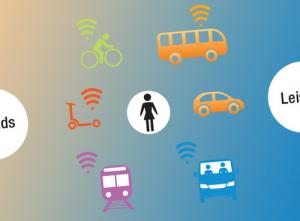Navigant
H. Christine Richards is a managing consultant at Navigant, where she is focused on the energy transition's impact on North American utilities. She has worked as a utility industry analyst for well over a decade, studying first the emerging smart grid scene and then the broader digitization, decentralization, and decarbonization of critical infrastructure.
Derek Jones is a director at Navigant, where he leads the transportation consulting group and manages market assessment, adoption forecasting, load research, regulatory strategy, and program implementation. He has more than 14 years of experience in the transportation and energy sectors, along with a deep knowledge of U.S. regulatory and policy environments.
Lon Huber is a director at Navigant, overseeing the Energy segment's North American retail regulatory offering. He provides expert witness testimony, proceeding strategy, and policy solutions on behalf of clients across the energy landscape. Lon is well known for creative data-driven solutions and was named the 2018 Innovator of the Year by Utility Dive.
John Gartner is a director at Navigant and is focused on transportation research and consulting efforts. He has overseen dozens of projects focused on electric vehicles, their local and national impact on utilities, business models for EV charging services, e-mobility, and the expected utilization of of EV charging equipment for both U.S. and international clients.
We are on the verge of upending some of most fundamental building blocks of our communities: energy and transportation. Smart communities bring along an ever-expanding set of transportation options that shifts citizens from personal vehicles to personal mobility — a change that is redefining the role of utilities. New platforms will enable utilities to embrace emerging mobility and transportation-to-grid (T2G) business models, and regulators play a critical role in shaping these opportunities.
Transportation Options Grow

The proliferation of personally owned transportation throughout most of the twentieth century is shifting dramatically in the twenty-first century, as depicted in Figure One.
See Figure One.
The Past: Personal Vehicles Dominated
Over the course of the twentieth century, the personal automobile transformed the way people lived, worked, and played throughout the developed world. Changes — from the rise of urban sprawl to NASCAR — were enabled by the relatively inexpensive and easy to access mobility that enabled individuals to move over greater distances and speeds at will. However, that mobility and the use of personally owned vehicles has come at a tremendous cost in terms of air quality, traffic congestion, health impacts, and road safety.
Emerging: Autonomous, Connected, Electric, and Shared
Improved electric drive performance, ever-increasing computing power, new sensing technologies, mobile apps, and wireless communications are enabling new modes of transportation. The key characteristics of transportation's emerging options can be described as autonomous, connected, electric, and shared — also known as ACES:
 H. Christine Richards: A recent entrant to the ratepayer protection conversation is EV subscription pricing.
H. Christine Richards: A recent entrant to the ratepayer protection conversation is EV subscription pricing.
Autonomous: Vehicles that can navigate with little to no human interaction.
Connected: Vehicles that can connect and communicate with surrounding vehicles, sensors and infrastructure, such as vehicle-to-home, vehicle-to-building, vehicle-to-infrastructure (V2I), and vehicle-to-grid.
Electric: The electrification of vehicles, primarily to battery EVs (BEVs) and plug-in hybrid EVs (PHEVs).
Shared: The shift away from consumer-owned modes of transportation — such as a personal car — toward mobility solutions that are consumed as a service (such as mobility as a service [MaaS] or transportation as a service [TaaS] and often in tandem to provide a multimodal transportation solution between origination and destination points.
 Derek Jones: Sell charging services to EV owners and try to maximize revenues by fixed or flexible tariffs in public and private spaces.
Derek Jones: Sell charging services to EV owners and try to maximize revenues by fixed or flexible tariffs in public and private spaces.
Each of these characteristics is evolving at a different pace, but there is evidence of these changes taking place today. Las Vegas, for example, began operating the country's first automated shuttle service on public roads in November 2017. The eight-seat, a hundred percent electric passenger shuttle uses GPS, cameras, and sensors that can communicate with traffic lights through V2I technology. The program will also analyze pedestrian and rider reactions and attitudes toward automated vehicles.
New Market Platforms Emerge
We are transitioning from the well-known model of personally owned vehicles driving on roadways and powered by petroleum products, to a multitude of connected, electric, shared transportation options in smart communities whose paths are still undefined.
New platforms are emerging as a natural outgrowth of this transformation that can enable market players to adapt and grow in this new environment. These platforms — new customer-centric products and services that leverage multimodal, multifuel technologies, and viable business models — include the following:
Infrastructure provider: Provide charging points with different levels of infrastructure management, fleet services, and energy management, including software.
 Figure 1 - Shift In Transportation Modes
Figure 1 - Shift In Transportation Modes
Charging service provider: Sell charging services to EV owners and try to maximize revenues by fixed or flexible tariffs in public and private spaces.
Load orchestrator: Leverage EVs as a fleet of batteries on wheels (or along with stationary second-life batteries) by controlling their charging and discharging to balance load or provide ancillary services as part of a larger energy management service.
Mobility provider: Provide MaaS to customers, either on a narrow (B2C) or wider (B2B and municipalities) scope.
The Role of Regulators
What role will utilities play in these platforms? Much of that is up to regulators as new utility T2G platform opportunities continue to emerge and evolve, yet there is regulatory uncertainty and flux regarding utility participation in the changing transportation landscape. How can regulations keep up with technology and business changes? How will regulation influence new business models and value chains?
 Lon Huber: Leverage EVs as a fleet of batteries on wheels by controlling their charging and discharging to balance load.
Lon Huber: Leverage EVs as a fleet of batteries on wheels by controlling their charging and discharging to balance load.
Regulators are considering many directions — most of which revolve around the electrification of transportation as the building block for next-generation mobility options. Regulatory strategy generally falls into three approaches that in many cases will not be mutually exclusive:
Public good: Providing EV charging access to locations not viable for service by private market economics in support of environmental goals, economic development, and disadvantaged communities. For example, while opportunities like fast-charge corridors are more expensive investments for lower utilization than home or workplace charging, these investments unlock key transportation electrification value streams like customer awareness and supply chain readiness, while alleviating key market barriers like range anxiety and equal access to charging services.
Nascent Commercial Market: Leveraging utility access to lower cost capital, bulk hardware procurement economics, and electric system expertise to support EV infrastructure deployment that is better, faster, and cheaper to jolt to nascent markets that need a boost to gain traction. For example, enabling fleet vehicle charging through turnkey services can help optimize system cost impacts from EV infrastructure integration for ratepayers and utilize excess energy supply during overgeneration conditions, such as periods of peak solar PV production.
Ratepayer Protection: Protect ratepayers and support grid resiliency and smarter grid operation by avoiding inefficient or stranded asset investments from utilities to accommodate sub-optimally sited EV chargers. For example, utility-led EV infrastructure planning analyses across North America have optimized for vehicle miles traveled, EV adoption, and other key market trends ahead of selecting host site locations to help mitigate the risk of stranding utility make-ready and behind-the-meter EV supply equipment infrastructure investments and avoid foisting unrecouped costs onto ratepayers.
Subscription Pricing Opportunities
 John Gartner: A recent entrant to the ratepayer protection conversation is EV subscription pricing.
John Gartner: A recent entrant to the ratepayer protection conversation is EV subscription pricing.
A recent entrant to the ratepayer protection conversation is EV subscription pricing. The industry is starting to earnestly explore the potential value of adapting this pricing trend to the highly regulated energy industry.
The playbook for subscription business models is simple: convert short-term transactions into outcome-based, long-term relationships that create sustained revenue streams. In terms of EVs and EV charging infrastructure, the goal of subscription pricing is to: Recover utilities' fixed costs in a customer-friendly way; Give customers piece of mind through fixed price subscriptions; Mitigate demand charge complexity; Provide stable revenue streams for those investing in EVs and EV infrastructure; and Bundle products and services to make EVs and EV charging experiences seamless.
Pacific Gas and Electric provides an example of subscription pricing as it works to replace demand charges with a new subscription rate plan for customers using commercial EV charging.
The utility submitted its proposal to the California Public Utilities Commission in November 2018 for commercial customers to pay a monthly fee for the amount of power that best fits their needs. PG&E anticipates that this change will help companies find fuel savings through avoiding demand charges that can occur during high powered EV charging.
The Road Ahead
As with the growing number of transportation and mobility options that come with smart communities, there are a growing number of ways that utilities and regulators can support the transition from traditional personal vehicles to transportation that is autonomous, electric, connected, and shared.
A long, but exciting road awaits. Utilities and regulators need to consider frank conversations about the future platforms that will enable utilities to support what comes next for ACES in smart communities.
Navigant on Smart Communities:
- Smart All Over, by Rob Wilhite
- Pathway to Smart City Resiliency: The Microgrid Platform, by Peter Asmus
- The Connected City: A Platform for City Planners, Citizens, and Utilities, by Richelle Elberg and Eric Woods
- Personal Mobility in Smart Communities: The Role of Utilities and Regulators, by H. Christine Richards, Derek Jones, Lon Huber, and John Gartner
- Circular Economy: Shaping the Next Wave of Smart Communities, by Preeti Srivastav and Noah Goldstein



